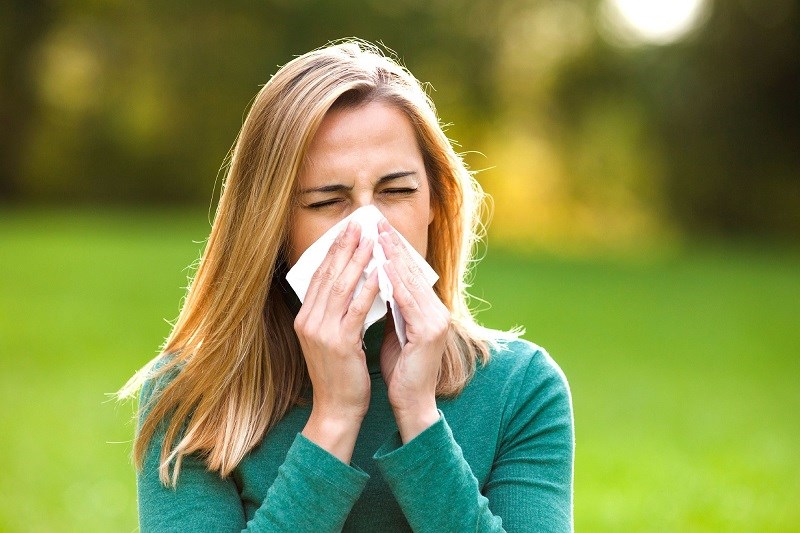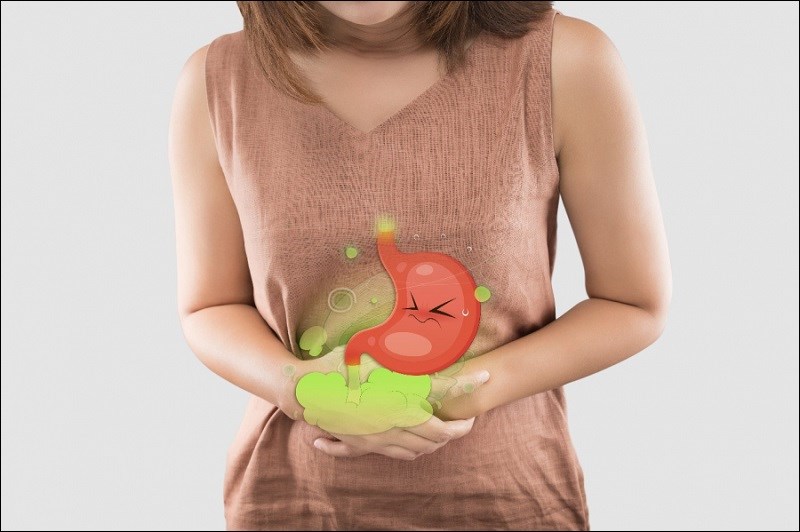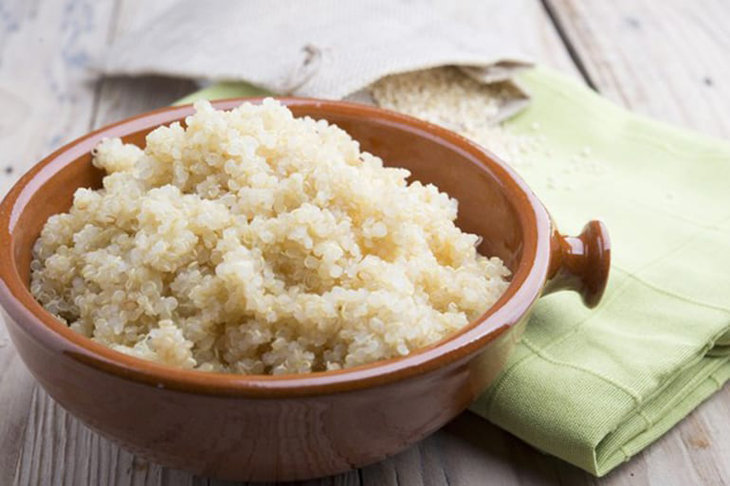What is Quinoa – The Benefits and Cooking Instructions
1 What is Quinoa?
What is Quinoa?
Quinoa, also known as Chenopodium quinoa, is a grain that belongs to the Amaranthaceae family. It is not officially classified as a grain because it is closely related to spinach, beets, and other pseudocereals.
The cultivation of quinoa dates back 3,000-4,000 years in the region of Lake Titicaca, and archaeological evidence suggests that it has been present for even longer, dating back 5,200 to 7,000 years. Quinoa originated from the Andes region of Peru, Colombia, Ecuador, Chile, and Bolivia.
Currently, quinoa is widely grown in countries within Europe, Australia, the United States, China, Canada, and Japan.

Characteristics of Quinoa
The quinoa plant grows to an average height of 1-2m, with woody stems that branch out. The leaves grow alternate, with broad leaflets covered in silky hairs. The flowers are clustered and self-pollinating. The seeds have a diameter of about 2mm and come in various colors, including white, red, and black depending on the variety.
After harvest, quinoa seeds are processed to remove the outer layer, which usually contains bitter-tasting saponins. Quinoa can be cooked and prepared in various ways and is a versatile grain that offers significant nutritional value.
Additionally, the leaves of the quinoa plant can be used as a vegetable, although this practice is less common compared to using the seeds.

2 Nutritional Components of Quinoa
In each cup (100g) of cooked quinoa, it contains about 222 calories and significant nutrients, including:
- Water: 72%
- Protein: 4.4g
- Carbohydrates: 21.3g
- Fat: 2.8g
- Sugar: 1.9g
- Fiber: 2.8g

Carbohydrates
Carbohydrates make up about 21% of cooked quinoa, with around 84% being starch and the rest being fiber and a small amount of sugars such as ribose, galactose, and maltose.
The low glycemic index (about 53) of quinoa makes it suitable for diets related to obesity and certain conditions, especially diabetes.
Fiber
Quinoa contains a relatively good amount of dietary fiber, comparable to oats and yellow corn. The fiber content accounts for about 10% of the dry weight of cooked quinoa, with insoluble fiber making up about 80-90% of the total fiber content.
Additionally, quinoa contains some resistant starch, which promotes the growth of beneficial bacteria in the gut and stimulates the production of short-chain fatty acids (SCFAs), improving gut health and reducing the risk of digestive disorders.
Protein
Protein makes up about 16% of the dry weight of quinoa, higher than other common cereals like rice, corn, and barley. The protein in quinoa contains all nine essential amino acids, comparable to high-quality protein sources like casein found in milk.
Moreover, quinoa contains significant amounts of lysine, histidine, and methionine. It is also gluten-free, making it suitable for individuals with gluten intolerance.
Vitamins and Minerals
Quinoa is rich in various minerals and vitamins, including:
- Manganese: Essential for metabolism, development, and growth.
- Phosphorus: Essential for bone health and maintaining different tissues in the body.
- Copper: Has an important role in cardiovascular health.
- Magnesium: Essential for cellular function and tissue development, often recommended in the diet of pregnant women.
- Iron: Involved in various functions in the body, particularly in transporting oxygen in red blood cells.
- Zinc and potassium: Play specific roles in human health.
Other Plant Compounds
In addition to minerals and vitamins, quinoa contains various other phytochemicals and plant compounds, such as:
- Saponins: Commonly found in the outer coating of quinoa seeds to protect them from insects and contribute to the bitter taste. Soaking and rinsing the seeds before cooking can help remove the saponins.
- Quercetin: A flavonoid compound with antioxidant properties that can protect against various diseases such as osteoporosis, heart disease, and some cancers.
- Kaempferol: May help reduce the risk of chronic diseases.
- Squalene: Acts as an antioxidant.
- Phytic acid: An antinutrient that can interfere with the absorption of certain minerals such as iron and zinc. Soaking or sprouting the seeds can help reduce phytic acid levels, allowing for better mineral absorption.
- Oxalate: Can bind with calcium, reducing the body’s ability to absorb this mineral and potentially increasing the risk of kidney stones in sensitive individuals.
Overall, quinoa has the highest antioxidant content among 10 common cereals and pseudocereals. Additionally, the flavonoid content in quinoa is even higher than that in blueberries.
3 Health Benefits of Quinoa
Due to its high mineral content, vitamins, antioxidants, and other beneficial nutrients, quinoa offers the following notable health benefits:
Helps Maintain Healthy Blood Sugar Levels
Quinoa has been shown to have a beneficial effect on blood sugar control and insulin sensitivity, particularly in individuals with type 2 diabetes. It helps reduce the risk of developing type 2 diabetes and heart disease by lowering blood glucose, triglyceride levels, and insulin levels.
Furthermore, quinoa contributes to reducing the production of free fatty acids and lowering blood sugar levels to a lesser degree when compared to gluten-free bread or pasta.

Effective and Safe for Weight Loss
Quinoa’s low glycemic index, combined with its high protein and fiber content, makes it an excellent choice for weight loss. Consuming foods with a low glycemic index has been shown to reduce hunger and prevent overeating.
The protein in quinoa promotes metabolism and satiety, while fiber improves gut health and helps with calorie control.

Gluten-Free and Low FODMAP
Quinoa is an excellent choice for individuals with celiac disease or gluten intolerance because it is gluten-free. Including quinoa in a gluten-free diet has been shown to provide nutritional and antioxidant benefits compared to other gluten-free grains such as rice, corn, and oats.
Additionally, quinoa has a low FODMAP (fermentable oligosaccharides, disaccharides, monosaccharides, and polyols) content, making it suitable for individuals with irritable bowel syndrome (IBS) and other digestive disorders.
High in Dietary Fiber
Quinoa contains a much higher amount of dietary fiber compared to other grains. A cup of cooked quinoa contains about 17-27g of fiber, with approximately 2.5g being insoluble fiber.
Quinoa’s soluble fiber content is relatively good and has been shown to help reduce blood sugar levels, lower cholesterol levels, increase satiety, and aid in weight loss and disease prevention.

Low Glycemic Index
Despite its relatively high carbohydrate content, quinoa has a low glycemic index, making it suitable for weight loss diets. However, it should be used with caution in low-carb diets.

Can Cause Allergies
While there is still limited research on quinoa allergies, it can cause allergic reactions similar to other grains. For example, saponins can cause bitterness and allergic symptoms in some individuals.

Possible Side Effects
Improper or unfamiliar consumption of quinoa can potentially cause side effects. For example, consuming a large amount of quinoa fiber and not gradually increasing the intake may result in gastrointestinal issues.

Proper Storage of Quinoa
Quinoa has a long shelf life, but it is important to ensure proper storage. Divide the quinoa into portions and keep them in an airtight container or vacuum-sealed bag. Proper storage will help prolong the shelf life of the seeds. Cooked quinoa can be stored in a food container in the refrigerator for up to 7 days.

5 How to Cook Quinoa
Cooking on the Stove
Add water and quinoa to a pot, using a ratio of 1 part quinoa to 1.5 parts water. Cover and bring to a boil.
Once boiling, uncover and simmer over medium heat for about 15 minutes or until all the water is absorbed. After cooking, remove the pot from heat, leave it covered, and let it sit for an additional 10 minutes. (Leaving the pot covered after cooking prevents the quinoa from becoming wet and sticky.)

Cooking in the Microwave
Add 2 parts water and 1 part quinoa to a microwave-safe bowl. Cover and microwave for 3 minutes. Remove, stir, and let it sit for 5 minutes. Then, cover and microwave again for 3-5 minutes. Stir and let it sit for 2 minutes.
The post https://meo.tips/food-receipt/what-is-quinoa-the-benefits-and-cooking-instructions/ appeared first on Meo.tips.
View more from Meo.tips:
Tips for Cleaning Kitchen Glass Easily and Efficiently5 Easy and Highly Effective Ways to Clean and Deodorize the Sink
Tips for Defrosting with an Air Fryer and Cautions to Consider
Easy Kitchen Remedies to Improve Your Beauty
Sharpening a Knife Without Tools: Achieving Professional Results with an Easy Tip
How to Heat Food at Home Safely and Effectively
Growing Green Onions at Home: 2 Easy Methods for Clean & Beautiful Veggies
Choosing and Cleaning Clams Quickly for Fresh Meat
“16 Easy and Secure Strategies to Prevent Ant Infestations in Your Home”
Exploring the SPF & PA of Sunscreen and the Myths Common amongst Female Users
Correct Working Posture with Laptop Is Beneficial for Health
“What Causes Mosquitoes to Bite You More than Others?”
3 Strategies for Removing Mouse Glue from Clothing, Floors, and Animal Fur
Tempting Local Delicacies Await Tourists in Tay Ninh
How to Grow and Care for Gold and Silver Plants at Home: Meaning and Images
How to Utilize Digital Social Insurance (VssID) Functions in AZ
Where Can You Buy Indigo Fish and How Much Does it Cost?
“Unlock 8 Amazing Beauty Secrets with Everyday Aspirin!”
Affordable High-Quality Toners for Acne-Prone Skin – Top 5 Picks
Quick Ways to Erase Chocolate Stains from Clothing

Nhận xét
Đăng nhận xét